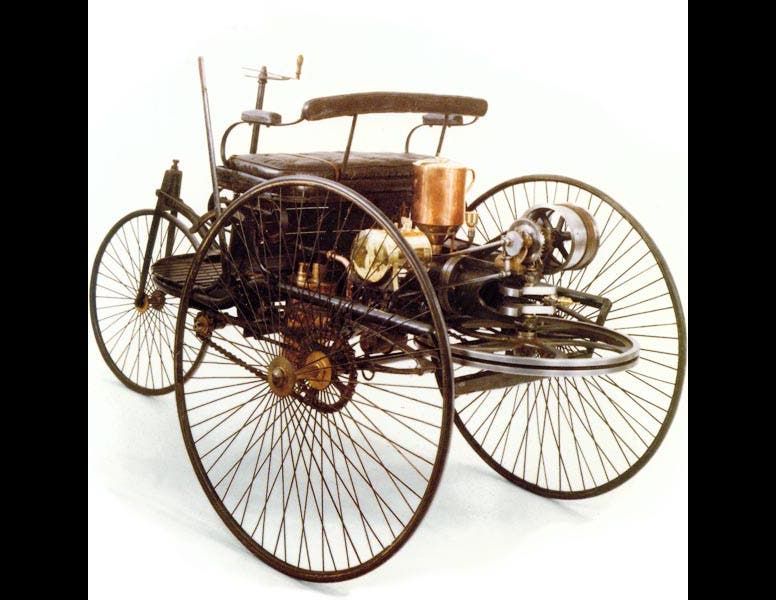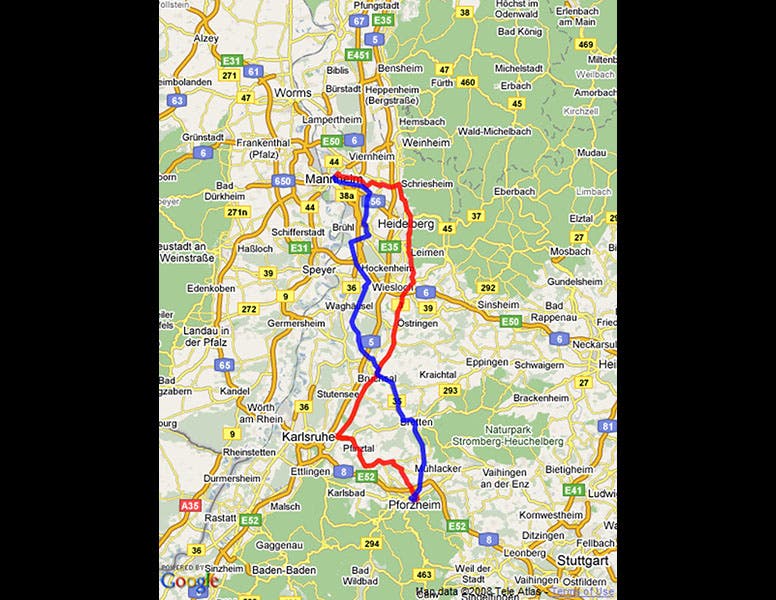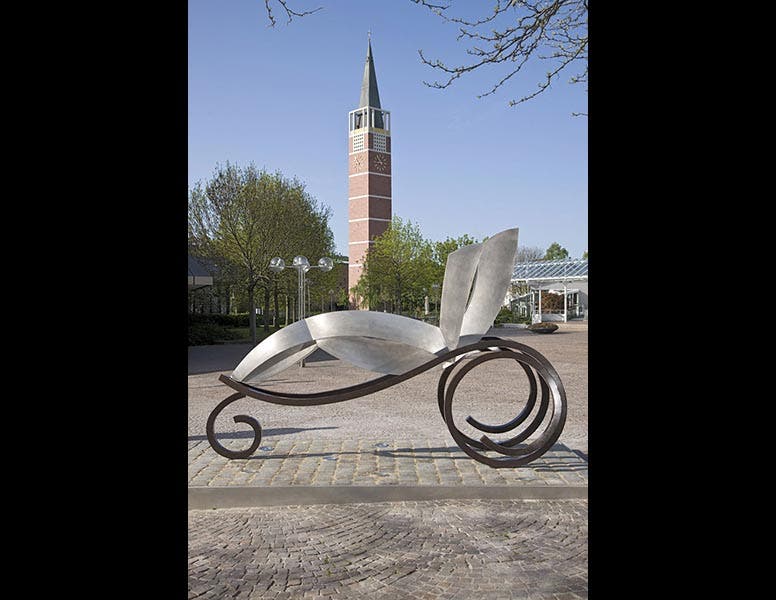Scientist of the Day - Bertha Benz
Bertha Benz, pioneer of the automotive road trip, was born May 3, 1849. Bertha was the wife and partner of Karl Benz, who built the first automobile powered by an internal combusion engine in 1885. This prototype is called the Benz Patent Motorwagen no. 1, and it still survives, in the Deutsches Museum in Munich (third image). Karl quickly built an improved model (1887), of which there survives a wonderful photo (fourth image)--that is Karl, holding the tiller. Notice the bicyclists, one with a penny-farthing, standing by the fence. Karl built a third version, no. 3 (1888), and he felt he now had something to market. But, of course, there was no market--someone would have to create one. That someone was Bertha (second image).
Bertha had actually provided most of the funds for the development of the Motorwagen, and she would have had her name on the patent if German law allowed that, which it did not. When Karl was reluctant to do something showy that would bring his invention into the public eye, Bertha took matters into her own hands. On Aug. 5, 1888, Bertha set out from Mannheim in Motorwagen no. 3, with her two sons, on the world's first long-distance motor trip. She headed to Heidelberg, then Wiesloch, and finally her hometown of Pforzheim, a distance of about 60 miles. It is said that she had to do some minor repairs en route, such as lining the brakes with leather when they wore down, and while in Wiesloch, she bought some petrol--actually cleaning solvent--from a pharmacy, since of course there were no gas stations anywhere. When she arrived in Pforzheim, she telegraphed her husband--did we mention that he was unaware she had absconded with Motorwagen no. 3 and the two kids?--and rested up for a few days, and then returned home by a slightly different route. It is claimed by countless sources that this sojourn by a woman put the motor vehicle on the map. It may have done so, but it did not noticeably increase sales of the Benz Wagens. It is thought that about 25 Motorwagens were built before 1893, and not all of those were actually purchased by would-be motorists.
These days, Bertha and Motorwagen no. 3 are a bigger story than Karl and Motorwagen no. 1. Germany has established the Bertha Benz Memorial Route, from Mannheim to Pforzheim and back, marked out with special signs (first image); we have included a map of the route above (fifth image). Every two years, Bertha’s journey is re-enacted by a slurry of vintage automobiles, including at least one Benz Motorwagen replica. One important stop is the State Pharmacy in Wiesloch, where they seem to remember Bertha’s petrol purchase quite well, billing the pharmacy as the "world' first filling station."
Motorwagen no. 3, or a version of it, may be viewed at the Benz Museum in Ladenburg am Neckar sixth image). There is a odd monument commemorating Bertha's trip in Wiesloch, but we prefer the abstract sculpture unveiled ten years long ago in the city square in Pforzheim (seventh image).
Dr. William B. Ashworth, Jr., Consultant for the History of Science, Linda Hall Library and Associate Professor, Department of History, University of Missouri-Kansas City. Comments or corrections are welcome; please direct to ashworthw@umkc.edu.









![“Aurora Borealis,” hand-colored wood engraving by Josiah Wood Whymper, [Natural Phenomena], plate 2, 1846 (Linda Hall Library)](https://assets-us-01.kc-usercontent.com:443/9dd25524-761a-000d-d79f-86a5086d4774/0245ffcb-b70c-477c-8792-0a73ebd54eb2/Whymper%2011.jpg?w=210&h=210&auto=format&fit=crop)



